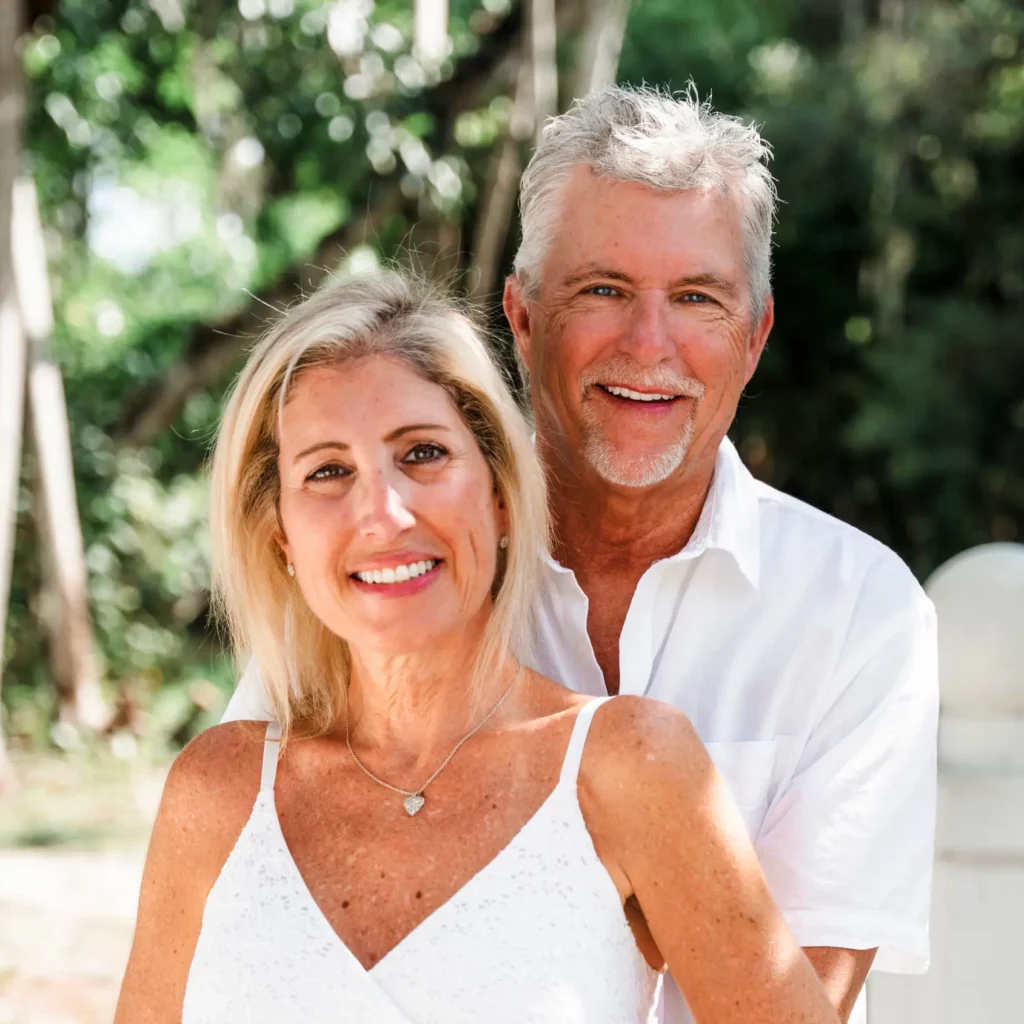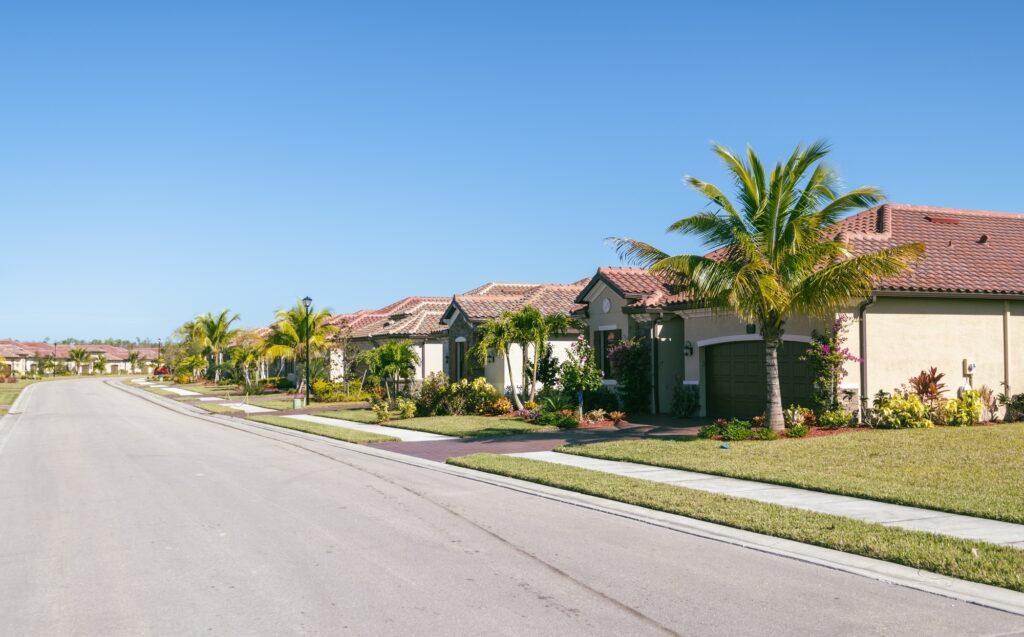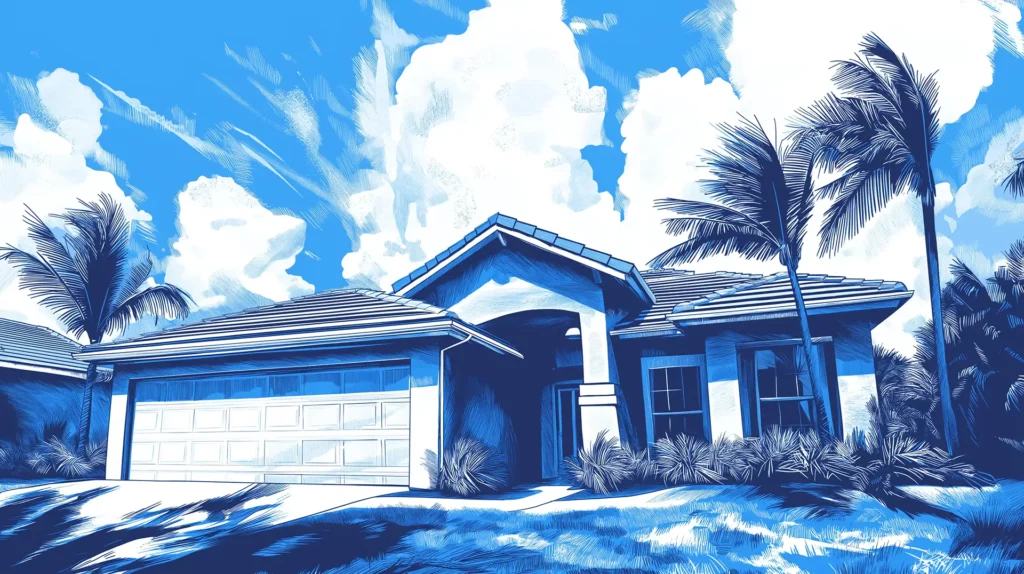Living in a coastal area like Florida has its perks—beautiful ocean views, fresh sea air, and plenty of sunshine. But owning property here also comes with unique risks. Hurricanes, flooding, and wind damage can cause serious headaches if you’re not properly insured. That’s why understanding Coastal Florida Insurance is so important. With the right policy, you can protect your home, your belongings, and your peace of mind.
Understanding Coastal Property Insurance Needs
Living near the coast is a dream for many, but it comes with its own set of challenges. Coastal properties in Florida face risks that other homes might not. Here’s what you need to consider about insuring your property.
Unique Risks of Coastal Properties
- Hurricanes and Tropical Storms
Coastal Florida is no stranger to hurricanes. From 2010 to 2020 alone, over 80 tropical cyclones impacted the state. These storms bring strong winds and torrential rain that can wreak havoc on homes.
- Flooding
Flooding is one of the most common hazards in coastal regions. FEMA reports that just an inch of floodwater can cause over $25,000 in damage to a home, making flood protection crucial.
- Wind Damage
Wind gusts in a hurricane can reach over 150 mph. These speeds can tear off roofs, shatter windows, and topple trees, leading to significant repair costs.
- Erosion and Saltwater Corrosion
Over time, coastal properties can face erosion from the ocean and saltwater exposure. Salt damages metal, concrete, and even wood, increasing maintenance costs.
Importance of Tailored Insurance Coverage
Standard homeowners policies are often not enough for coastal homes. You need a plan that considers these unique risks.
- Legal Requirements: Florida requires certain types of coverage, like windstorm and potentially flood insurance, depending on your location.
- Financial Protection: Without the right Coastal Florida Insurance, you might pay out-of-pocket for massive repairs.
- Being Underinsured: Many homeowners underestimate their home’s replacement value, leaving them vulnerable. Ensuring your policy reflects the current cost of rebuilding is essential to avoid surprises later.
Understanding these risks and choosing the right insurance protects not just your home but also your financial stability. If you live near the coast, these tailored coverages are key.
Types of Coverage Needed for Coastal Properties
When buying insurance for a coastal property, it’s important to know what coverage you need. Coastal Florida Insurance should protect you from the many unique risks these properties face. Here are the key types of coverage to consider.
Windstorm Coverage
Living in Florida means dealing with hurricanes and high winds. Standard homeowners insurance policies often exclude damage caused by windstorms. That’s why owning a separate windstorm policy or rider is crucial.
- What It Covers: Windstorm coverage protects against damage caused by hurricane winds, tornados, and tropical storms. This includes repair costs if a tree falls on your roof or wind shatters your windows.
- Exclusions to Watch For: Some policies exclude wind damage in hurricane-prone areas unless you meet specific requirements, like installing shutters.
- Deductibles: These are often percentage-based and vary by the value of your home. For example, with a $300,000 home and a 5% deductible, you’d pay $15,000 before insurance kicks in.
Flood Insurance
Flooding is a major risk for coastal properties, and most standard policies don’t cover it.
- Why You Need It: Floods cause more than $2 billion in damage annually across the U.S., with Florida being one of the most affected states. Flood insurance covers repairing water damage and replacing ruined belongings.
- Options Available: You can get flood insurance through the National Flood Insurance Program (NFIP) or private providers. NFIP policies cap coverage at $250,000 for the building and $100,000 for contents, so private options may be necessary for pricier properties.
- Flood Zone Maps Impact Premiums: Homes in high-risk zones (like Zone A or V on FEMA’s maps) often cost more to insure. For example, average NFIP premiums in high-risk areas can range from $900 to $2,500 annually.
Additional Endorsements or Riders
Some risks require optional add-ons to your policy for complete protection.
- Water Backup Coverage: Protects you if sewage backs up into your home. This is more common in flood-prone areas.
- Mold and Mildew Damage: Florida’s humid climate means mold can grow quickly. Mold remediations can cost anywhere from $500 to $6,000, so this endorsement can save you money.
- Valuable Property Coverage: If you own high-value items like art, jewelry, or antiques, a rider ensures their full value is covered.
Loss of Use Coverage
After a disaster, you may need temporary lodging while your home is repaired. Loss of use coverage pays for hotel stays, meals, and other living expenses. For example, if a hurricane makes your home uninhabitable for three months, this policy could cover those added costs.
Having the right Coastal Florida Insurance can make a huge difference in how well you recover after a disaster. Knowing the coverage you need is the first step to protecting your home and belongings.
Key Factors to Consider When Choosing a Policy
Selecting the right insurance policy for your coastal home takes careful planning. The risks in Florida’s coastal areas are unique, so it’s important to evaluate policies thoughtfully. Here are the critical factors to consider when shopping for Coastal Florida Insurance.
Coverage Limits and Deductibles
The policy you choose should offer enough coverage to rebuild your home and replace belongings. Make sure it matches your property’s value and risk.
- Coverage Limits: Avoid being underinsured. If your home costs $400,000 to rebuild but your policy only covers $300,000, you’ll face serious financial losses.
- Hurricane Deductibles: Most Florida insurers use percentage-based deductibles for hurricane damage, typically 1% to 5% of your home’s insured value. For a $400,000 property, a 2% deductible means you’d need to pay $8,000 upfront before insurance covers repairs.
Insurance Provider Reputation
Not all insurance companies handle coastal property claims well. Choose a provider with strong ratings and a history of excellent service.
- Claims Handling: Look for reviews from other coastal homeowners. An insurer’s response after a natural disaster is critical.
- Financial Stability: Check ratings from agencies like AM Best. A financially stable insurer is more likely to pay claims promptly.
Local Knowledge and Expertise
Work with an agent or company familiar with Coastal Florida Insurance. Local expertise matters when it comes to understanding area-specific risks and state legal requirements.
- Local Agents: A Fort Myers-based agent knows the hazards coastal properties face, from flood zones to windstorm risks.
- Personalized Recommendations: Someone who understands your area can suggest coverage options tailored to you, like specific flood or wind protections.
Building Codes and Home Features
Your home’s construction and features can affect your insurance premiums.
- Updated Building Codes: Florida’s building codes were strengthened after Hurricane Andrew in 1992, making newer homes less expensive to insure.
- Protective Features: Wind-resistant upgrades like impact-resistant windows or a reinforced roof could earn you discounts. FEMA reports that homes built to modern standards are 84% less likely to sustain major damage in a hurricane.
By focusing on these key factors, you can find a Coastal Florida Insurance policy that offers both comprehensive coverage and peace of mind. Taking the time to research and evaluate will safeguard your property against the unique risks of living by the coast.
Tips for Saving on Coastal Homeowners Insurance
Protecting your coastal property doesn’t have to break the bank. With a few smart strategies, you can lower your premium while still getting great coverage. Here are some tips to help you save on Coastal Florida Insurance.
Strengthen Your Home Against Coastal Hazards
Insurance companies often reward homeowners who take steps to reduce risks. Making your home safer can lead to significant discounts.
- Install Storm Shutters: These protect your windows from high winds and flying debris. Some insurers offer discounts of 5% to 15% for storm-proofing your home.
- Reinforce Roofs: Upgrading to a wind-resistant roof can reduce hurricane damage and save you money on premiums. According to FEMA, homes with impact-resistant shingles are less likely to need repairs after storms.
- Elevate Critical Systems: Raise HVAC systems and electrical panels above potential flood levels. Elevated systems improve safety and may qualify for lower flood insurance rates.
Bundle Insurance Policies
Combining your insurance policies with the same company can lead to significant savings.
- Home and Auto Bundles: Many providers offer a 10% to 20% discount when you bundle Coastal Florida Insurance with your auto policy.
- Multi-Property Discounts: If you own more than one property, insuring them with the same company could lower your overall costs.
Regularly Compare Insurance Quotes
Prices for Coastal Florida Insurance can vary greatly between companies. Shopping around ensures you’re getting the best deal.
- Review Yearly: Even if you’re happy with your current policy, comparing rates annually can help you spot better offers.
- Seek Expert Guidance: Work with an insurance agent familiar with coastal risks to find policies with the right coverage at competitive prices.
Take Advantage of Discounts
Insurance companies offer a variety of discounts that can help you save.
- Safety and Mitigation Discounts: You could qualify for reduced premiums by adding features like smoke detectors, impact-resistant windows, or an updated security system.
- Loyalty Discounts: Sticking with the same provider for several years may save you money. Some companies offer reductions for five years or more of continuous coverage.
- Good Payment History: Paying your premiums on time can also account for minor savings.
By being proactive and exploring your options, you can make your Coastal Florida Insurance more affordable. Small changes, like improving your home’s safety or bundling policies, can lead to big savings in the long term.
Steps to Purchase the Right Coastal Homeowners Policy
Finding the right Coastal Florida Insurance policy may seem overwhelming, but breaking it into steps makes it manageable. Here’s how to go about it, step by step, to ensure you get the coverage you need.
Assess Your Property’s Specific Risks
Every coastal property has its own risks. Knowing these will help you understand what to prioritize in your policy.
- Home Inspections: Schedule a professional home inspection to identify vulnerabilities, like an aging roof or outdated wiring.
- Flood Zone Classifications: Check FEMA’s flood maps to determine if your property is in a high-risk zone. Homes in zones like “A” or “V” are more likely to require flood insurance.
- Wind Risk: If your home is in a hurricane-prone area, explore coverage specifically for windstorm damage. The Florida Office of Insurance Regulation provides details about mandatory windstorm deductibles in certain areas.
Compare Policy Options
Not all insurance policies or providers are created equal. Comparing options ensures you get the coverage that works best for your needs.
- Request Multiple Quotes: Experts recommend getting quotes from at least three insurance providers. Make sure each quote includes similar coverage levels for an apples-to-apples comparison.
- Key Questions to Ask:
- What exactly does the policy cover?
- Are flood and windstorm damages included, or do I need additional endorsements?
- Is there a hurricane deductible, and how much will I need to pay out-of-pocket?
Read the Fine Print
Before committing to a policy, it’s important to understand the terms and conditions.
- Policy Exclusions: Read your policy carefully to identify excluded events or damages, such as mold or gradual wear and tear.
- Claims Process: Ask how claims are handled. For example, some companies require you to pay the full hurricane deductible for each storm in a year.
- Coverage Caps: Ensure there are no limits that could leave you underinsured for major expenses like rebuilding a home or replacing belongings.
Plan for Long-Term Insurance Needs
Coastal Florida Insurance isn’t a one-time decision. Regular reviews and adjustments help ensure your coverage keeps up with your evolving needs.
- Update Policies as Needed: Renovating or adding to your home? Notify your provider so your coverage reflects its new value.
- Expect Premium Adjustments: Flood zone changes or updated hurricane models can increase premiums. Set aside funds to prepare for those potential hikes.
Following these steps will make the process of purchasing Coastal Florida Insurance smoother and more effective. It ensures your home is well-protected, giving you peace of mind knowing you’re ready for the unexpected.
Owning a coastal property in Florida comes with incredible benefits, but it also brings unique risks. Proper homeowners insurance is essential to protect your investment and give you peace of mind. From understanding the hazards of hurricanes and flooding to selecting the right coverage like windstorm and flood insurance, it’s clear that standard policies might not cut it for coastal homes. You also need to consider factors like deductibles, provider reputation, and ways to save on premiums through discounts and home upgrades. Finally, taking a methodical approach to purchasing Coastal Florida Insurance ensures your home is well-protected for years to come.
If you’re ready to safeguard your coastal property, we’re here to help. Contact our Fort Myers insurance agency today for personalized advice or to get a quote on the right homeowners insurance for your needs.







